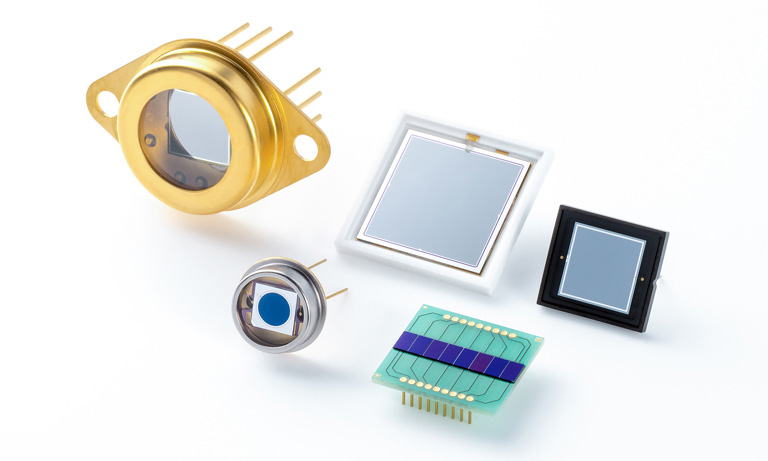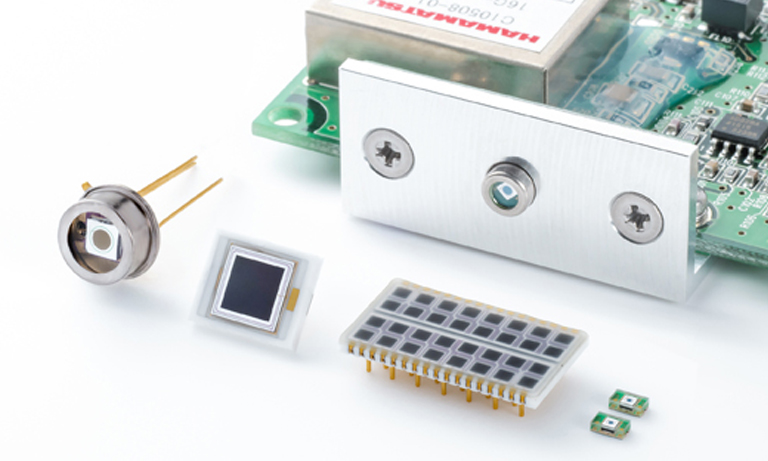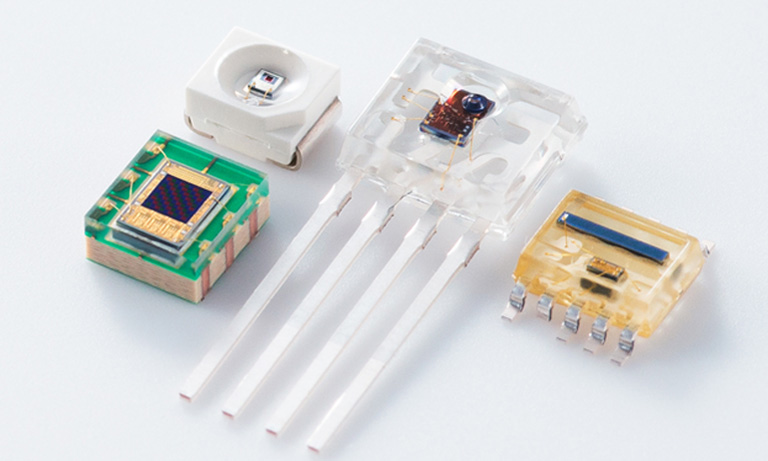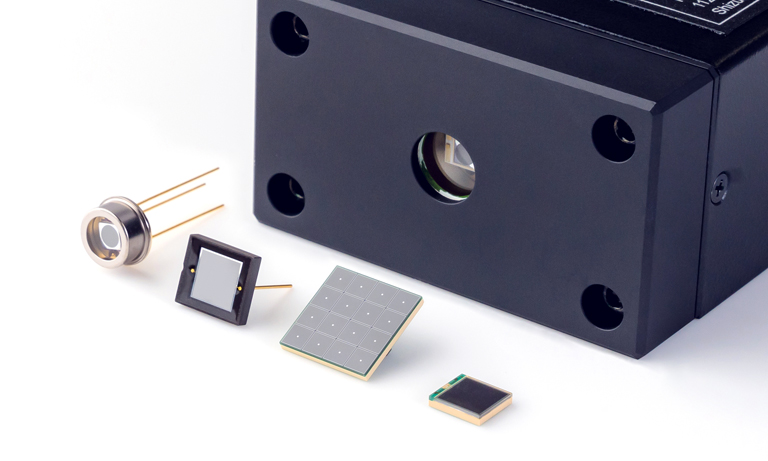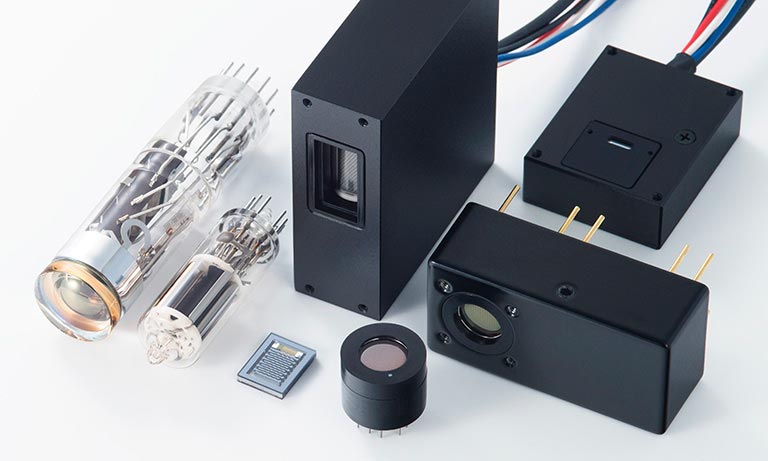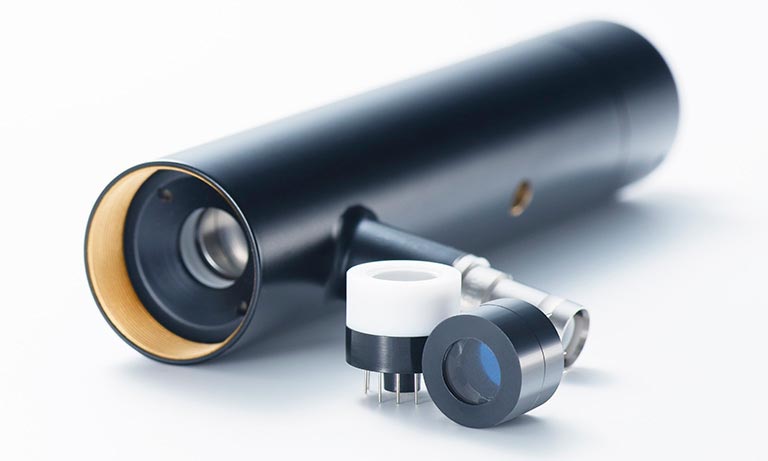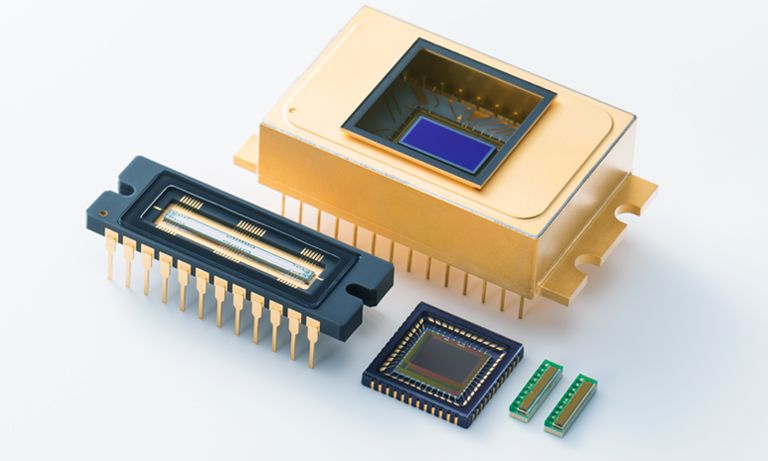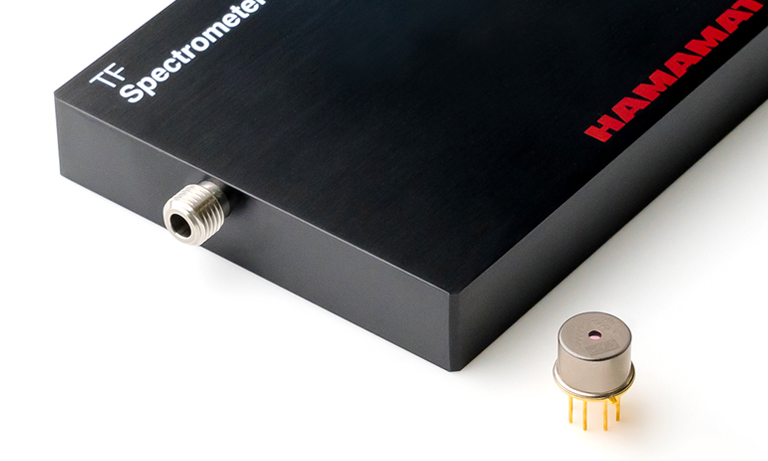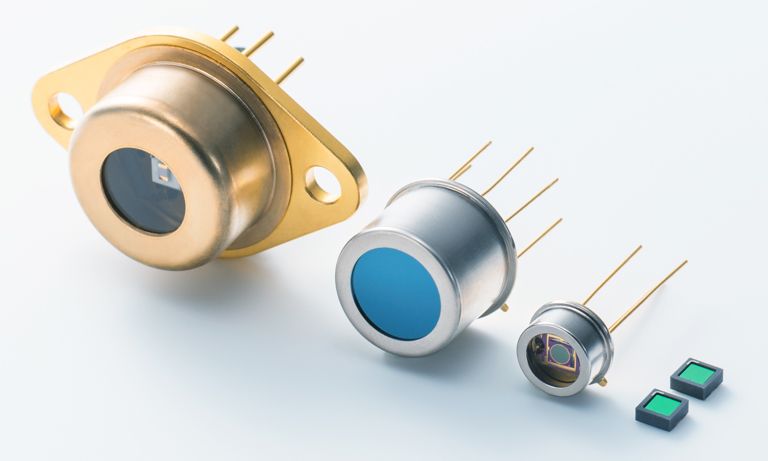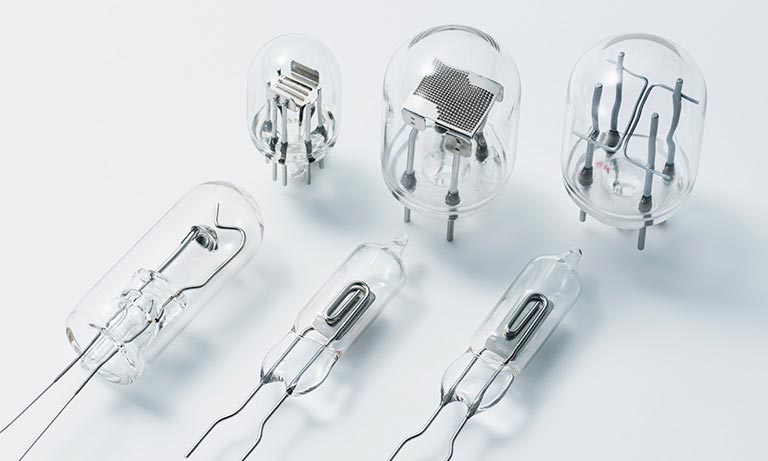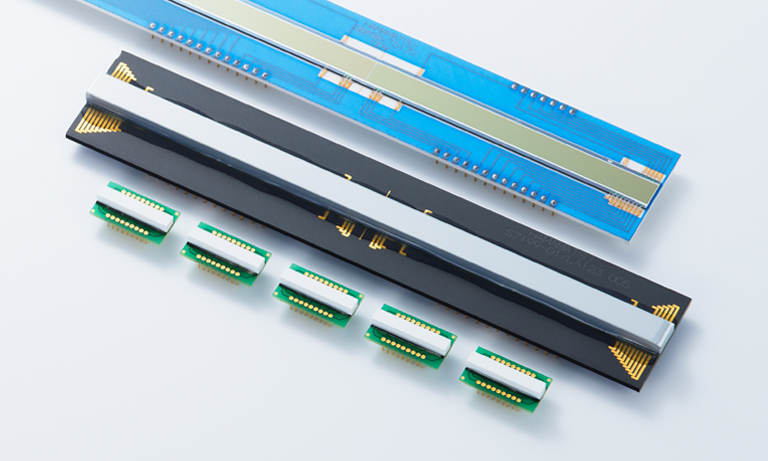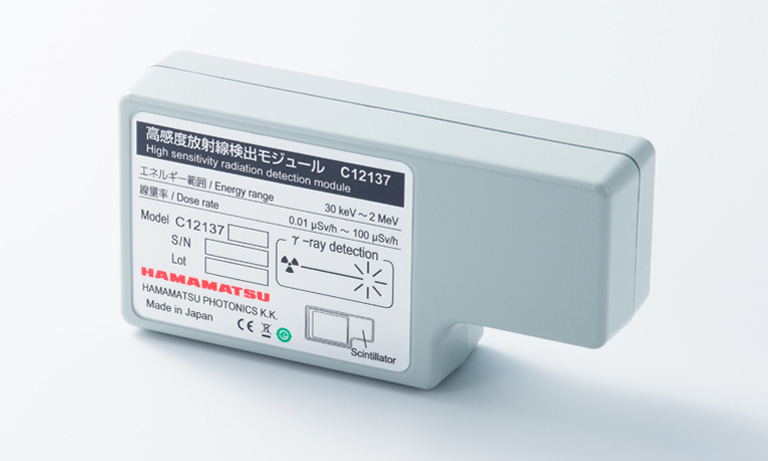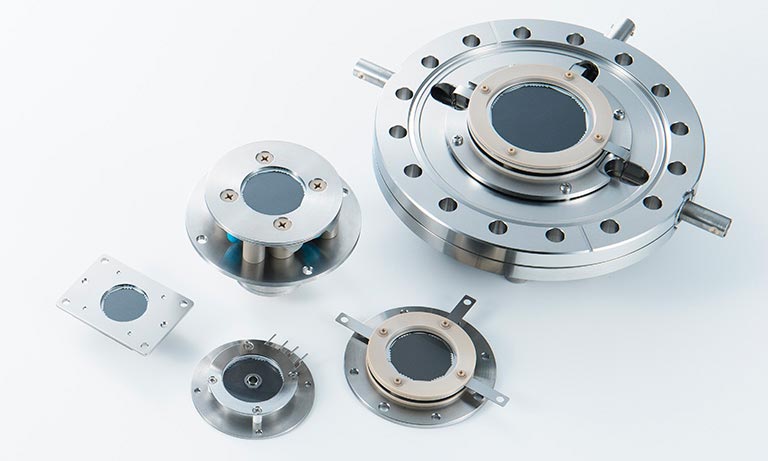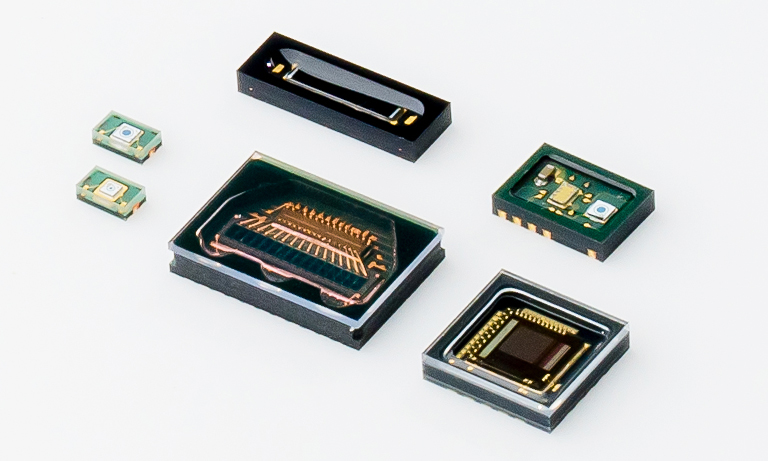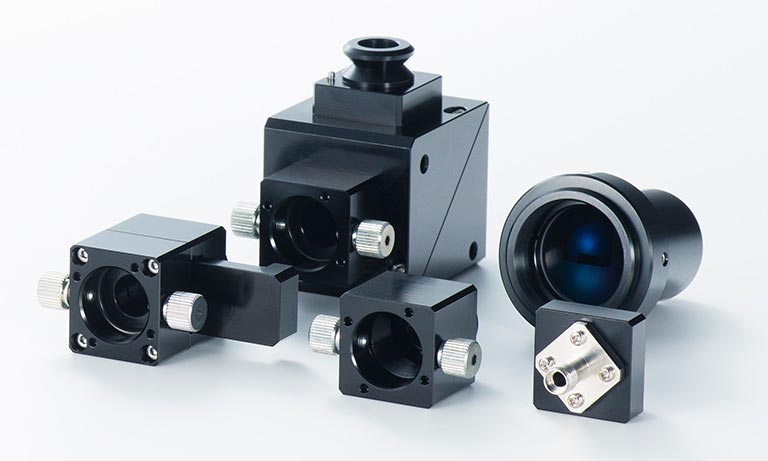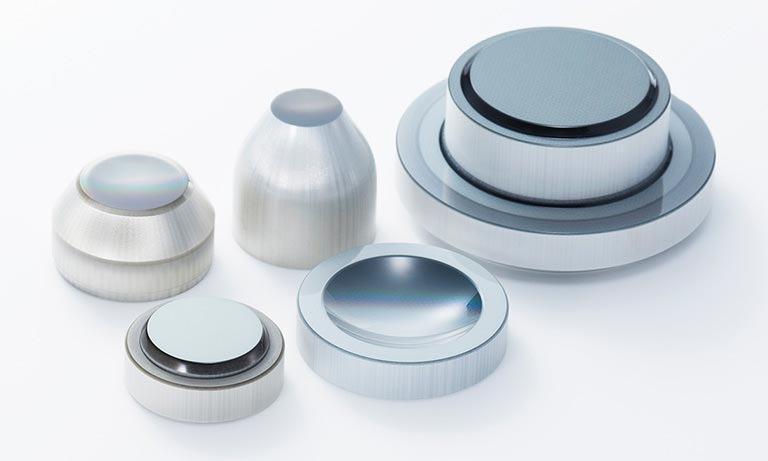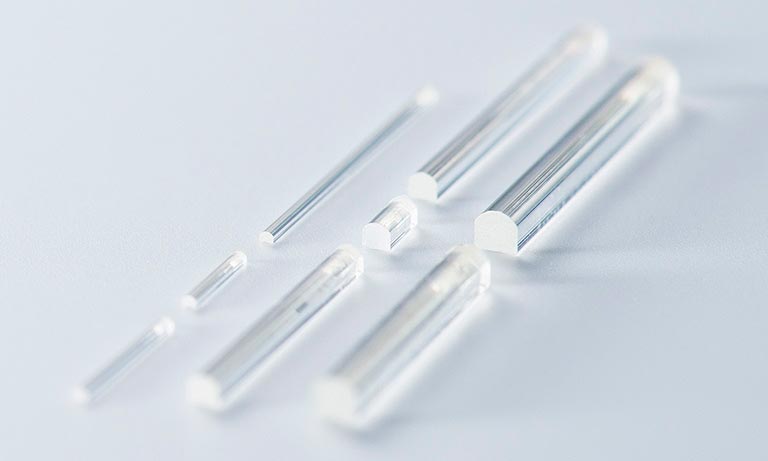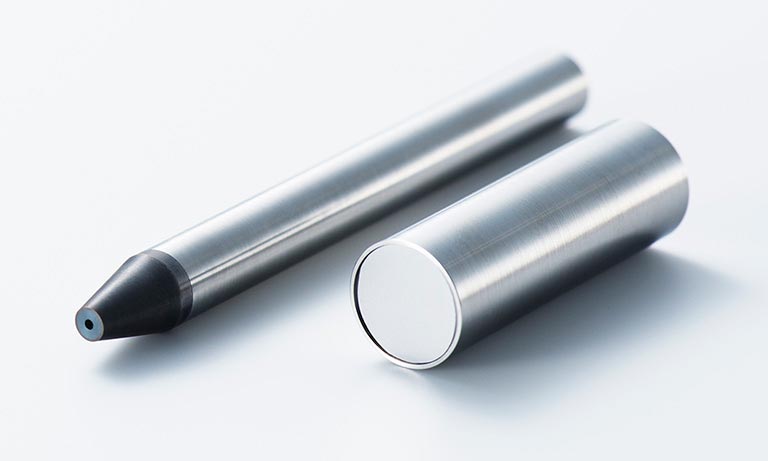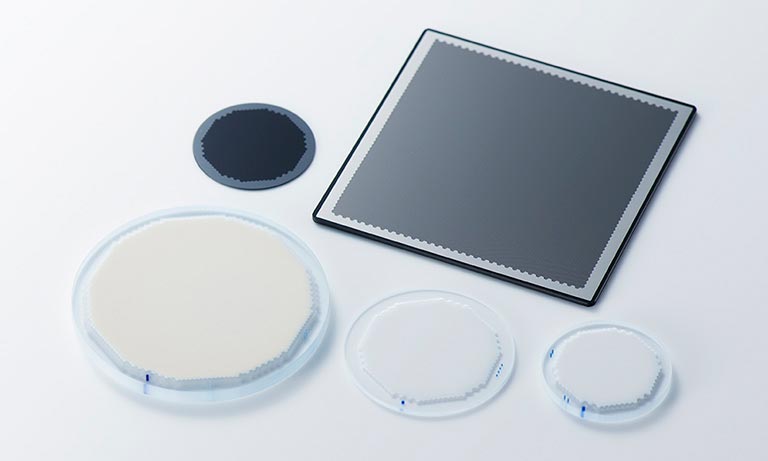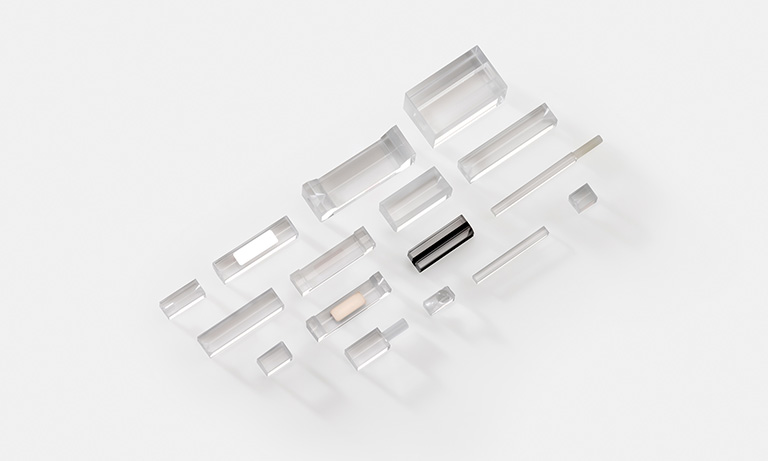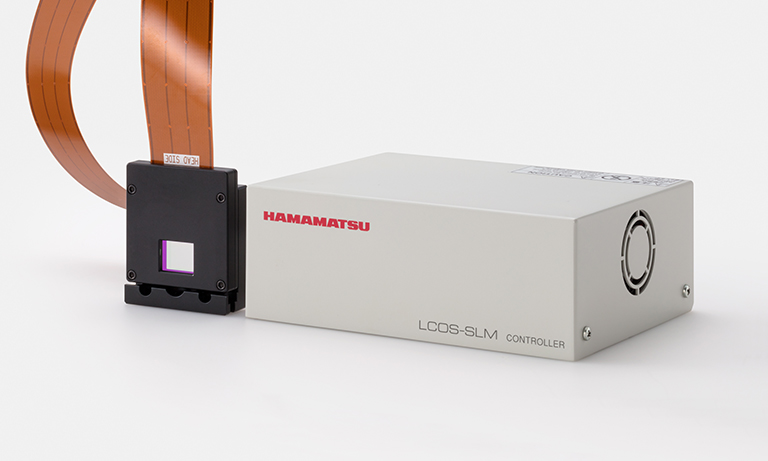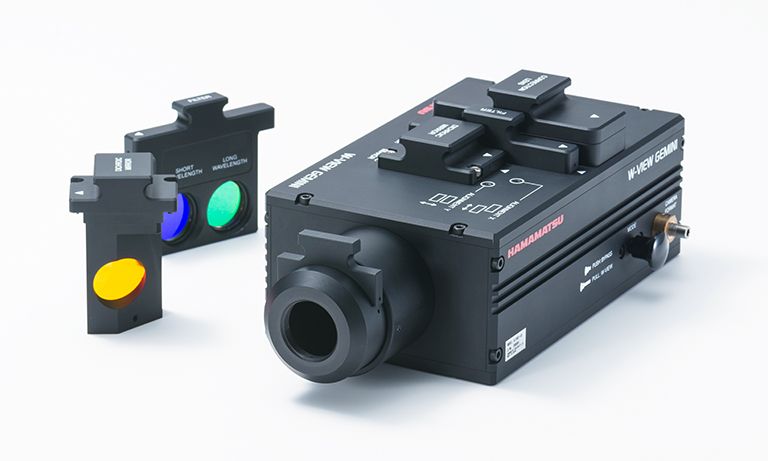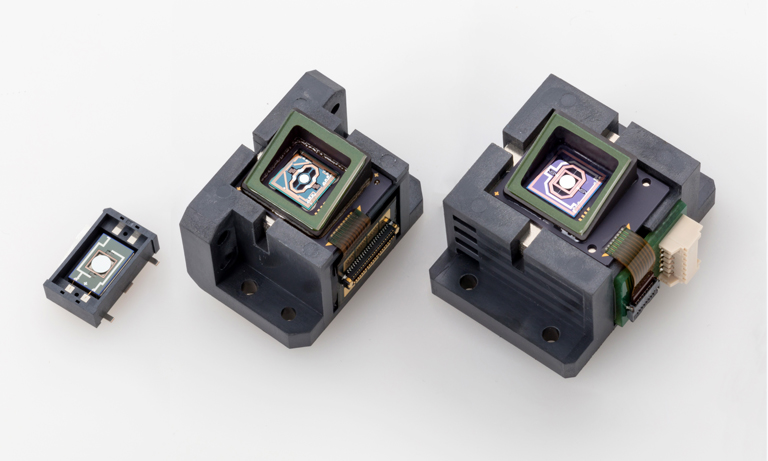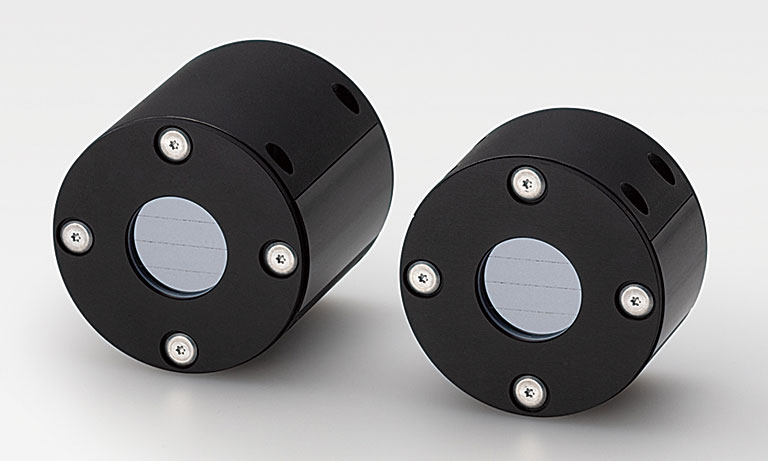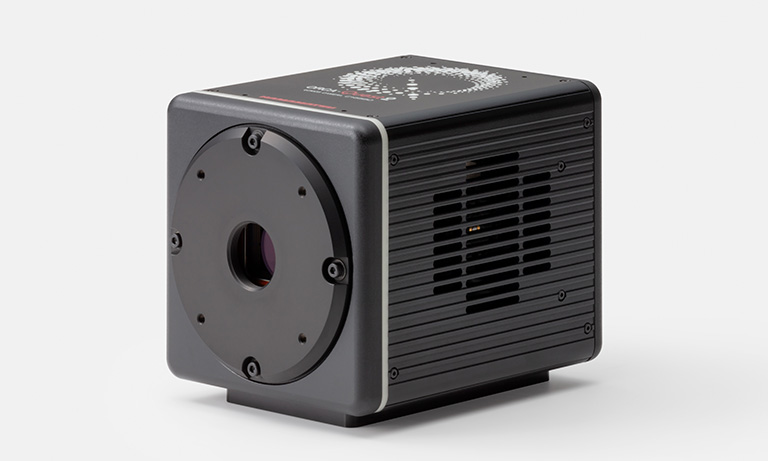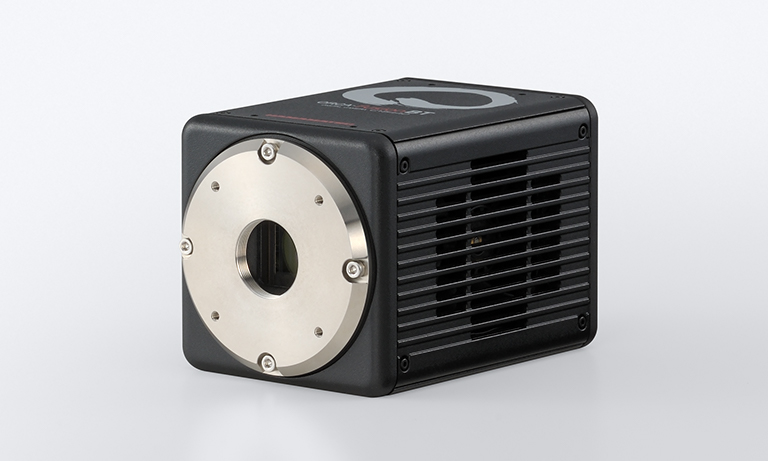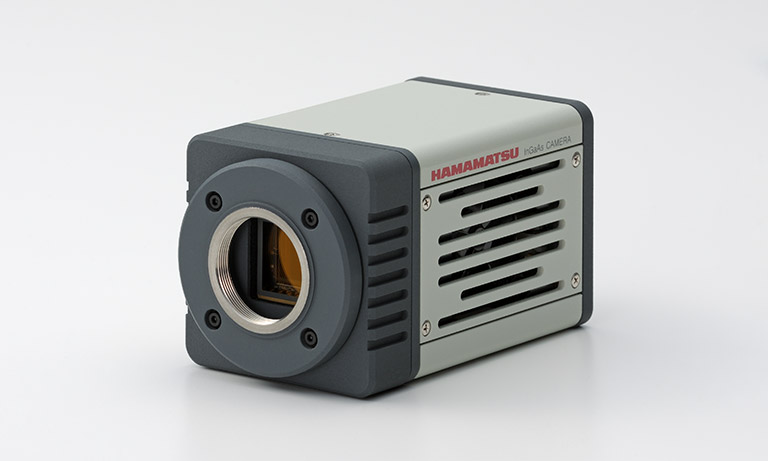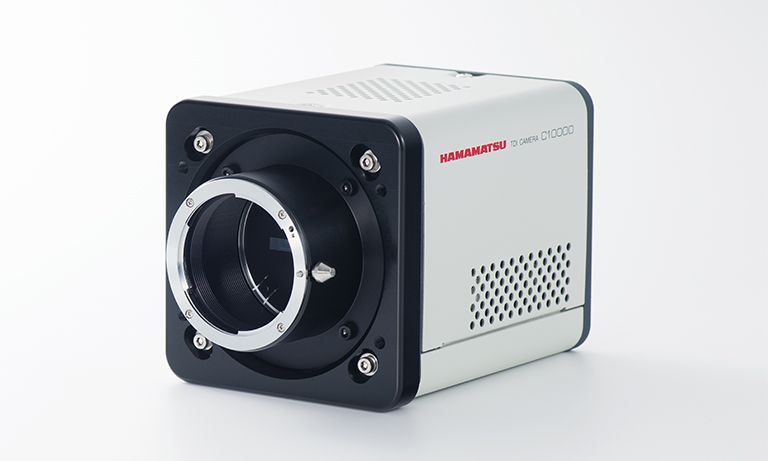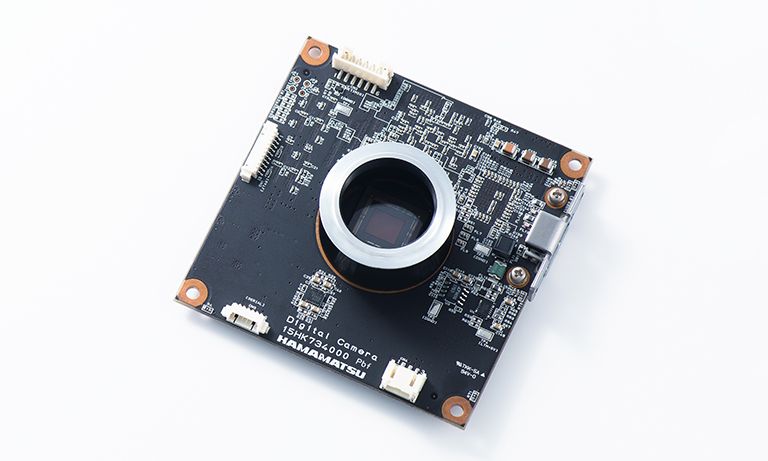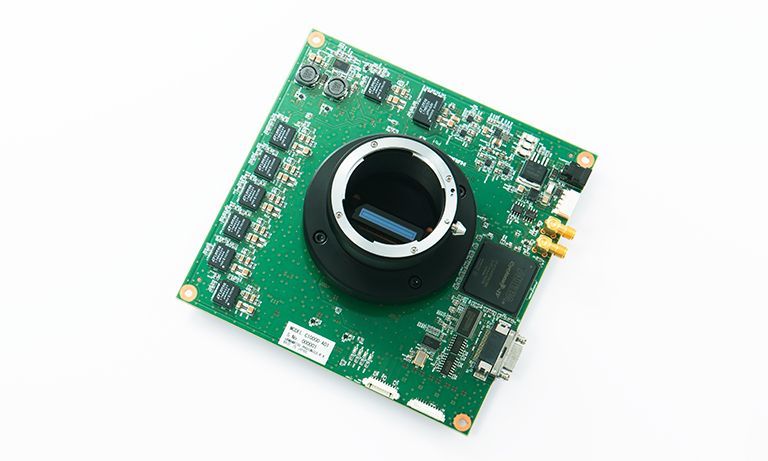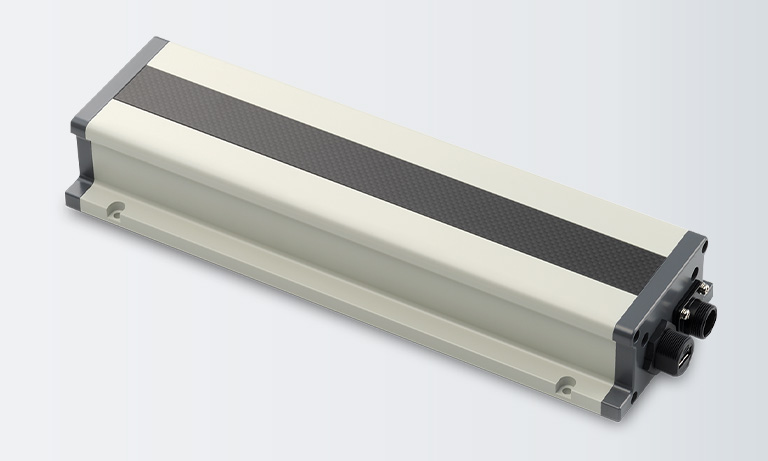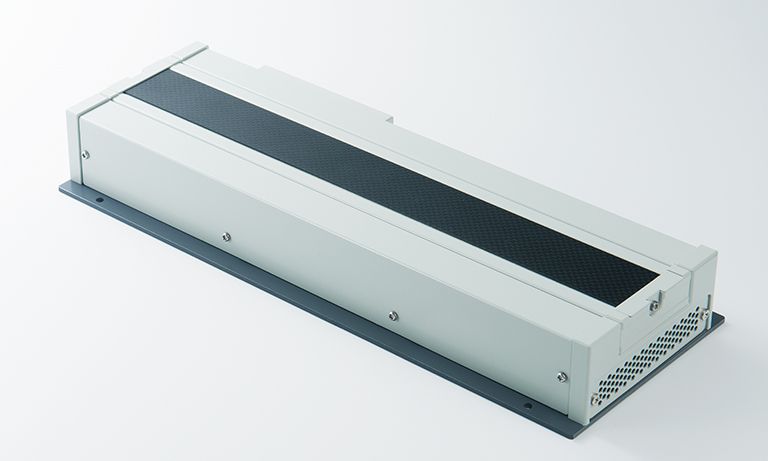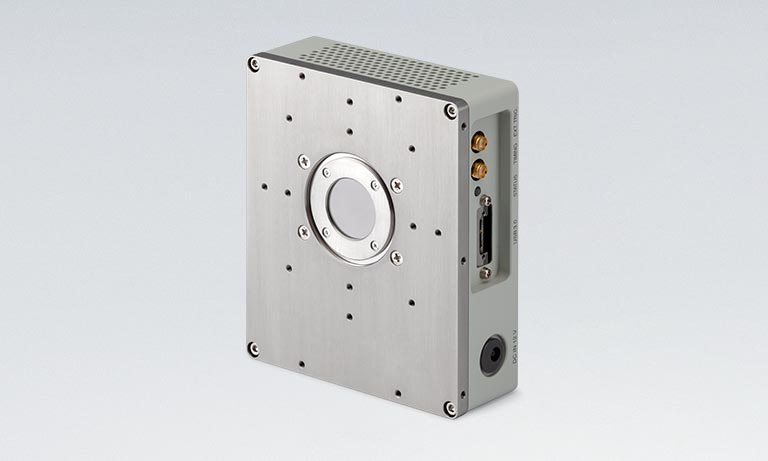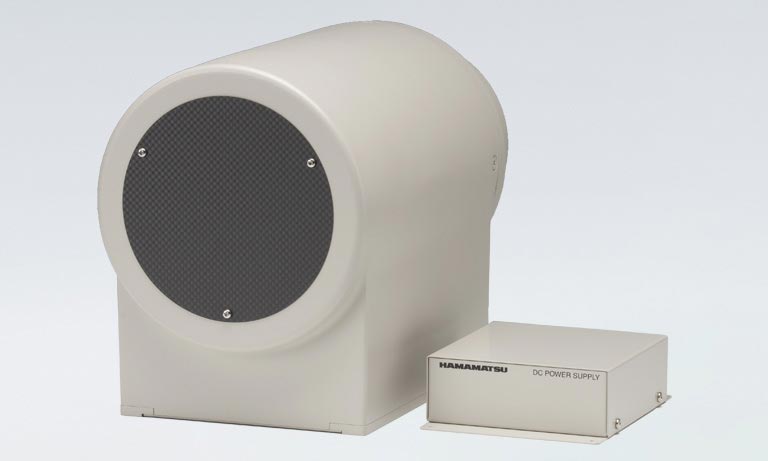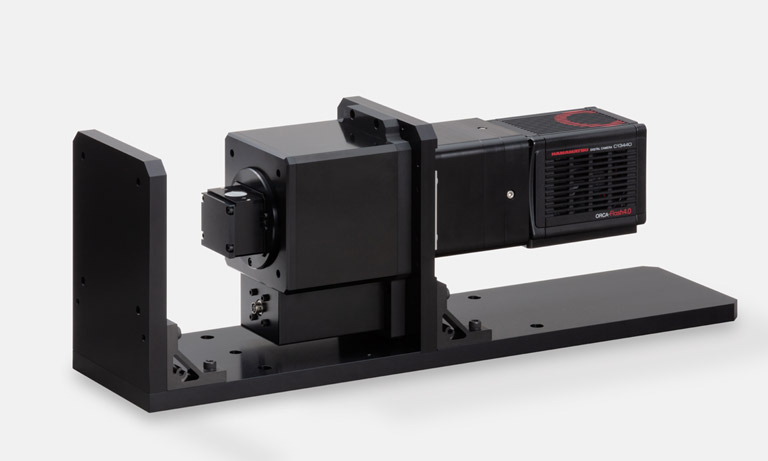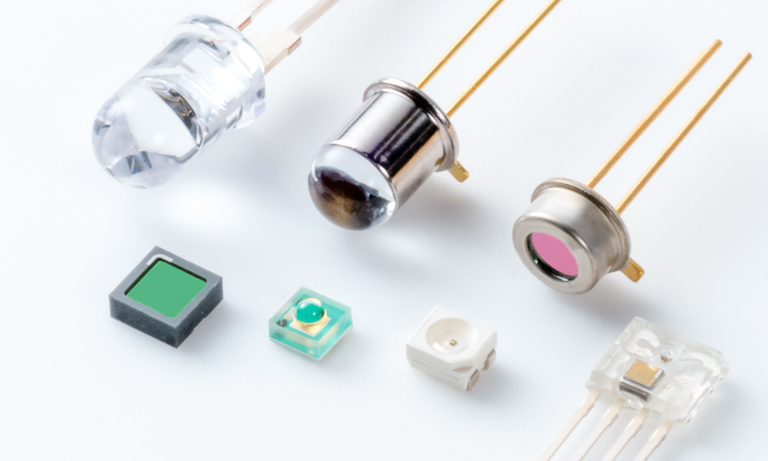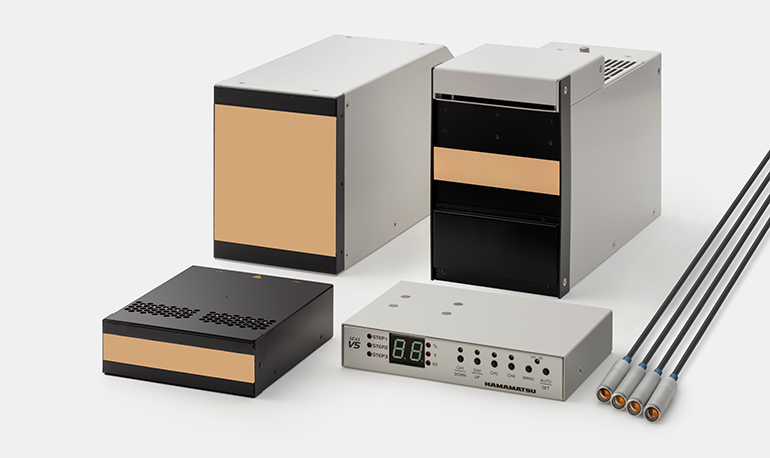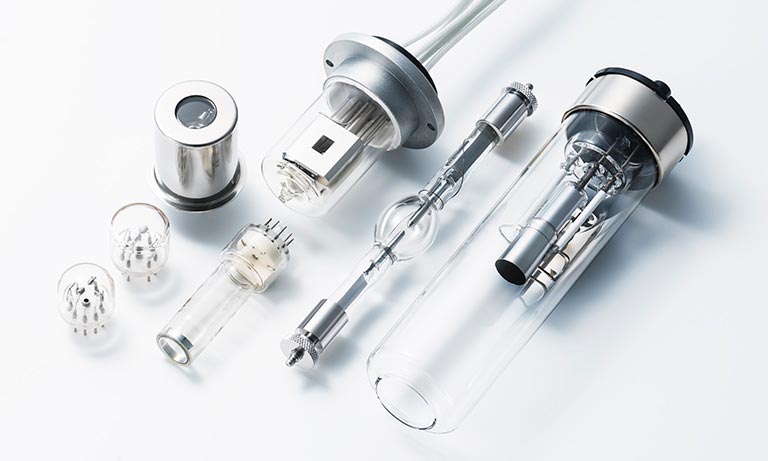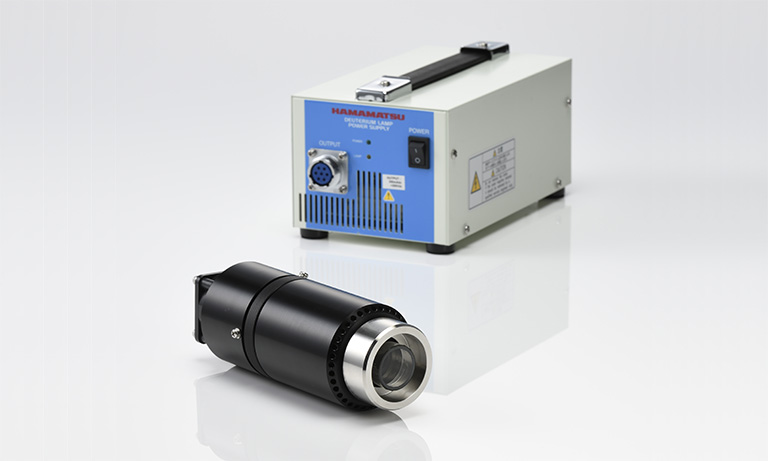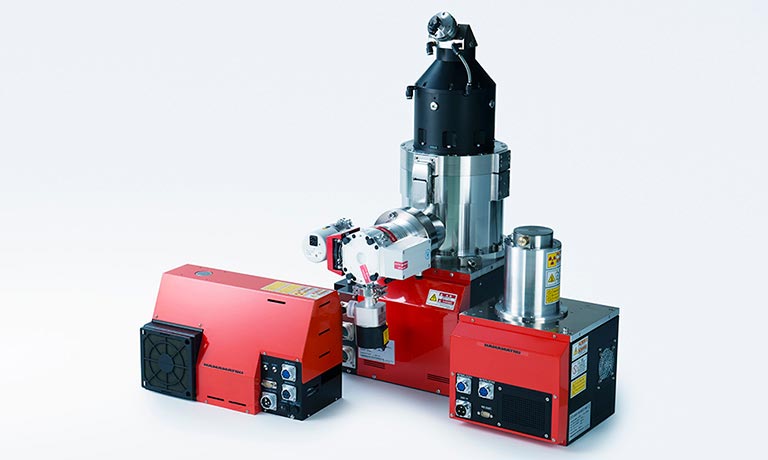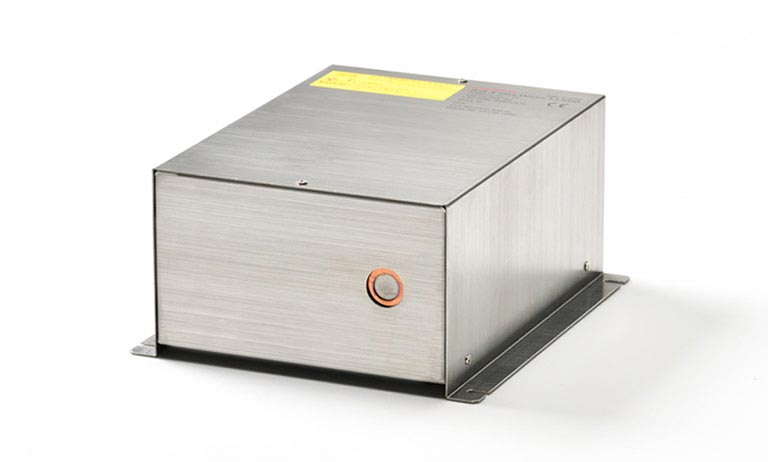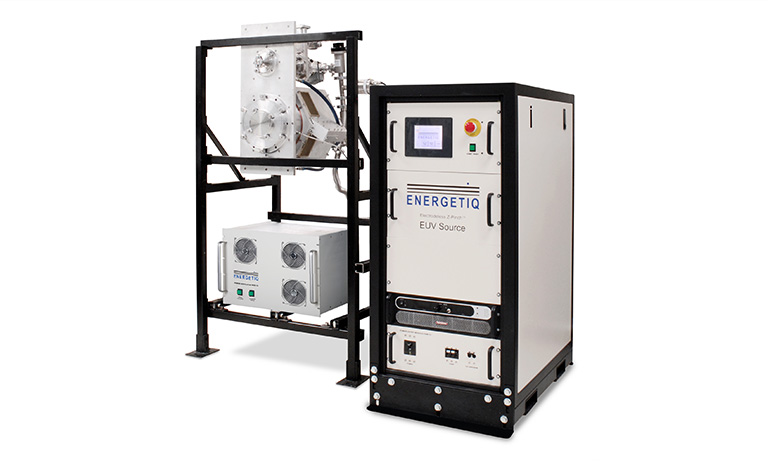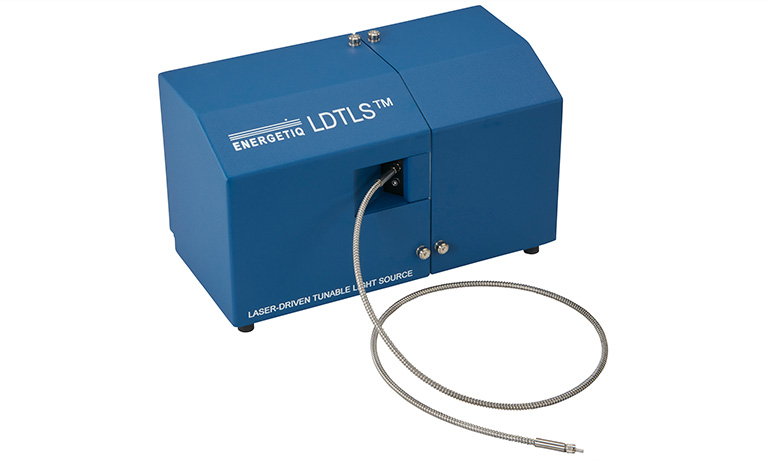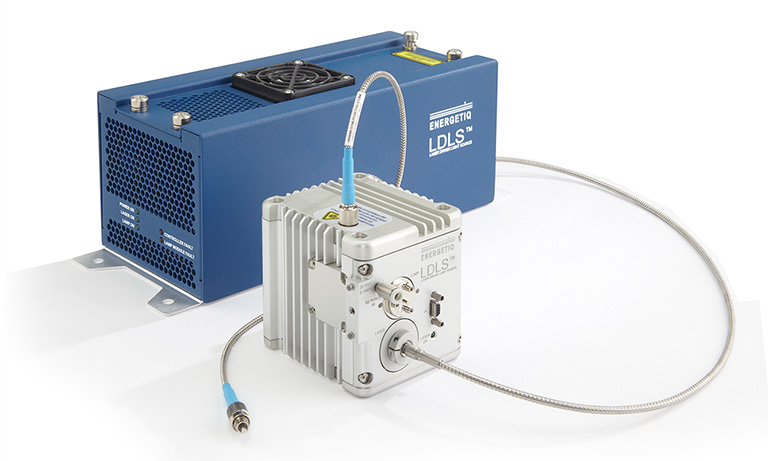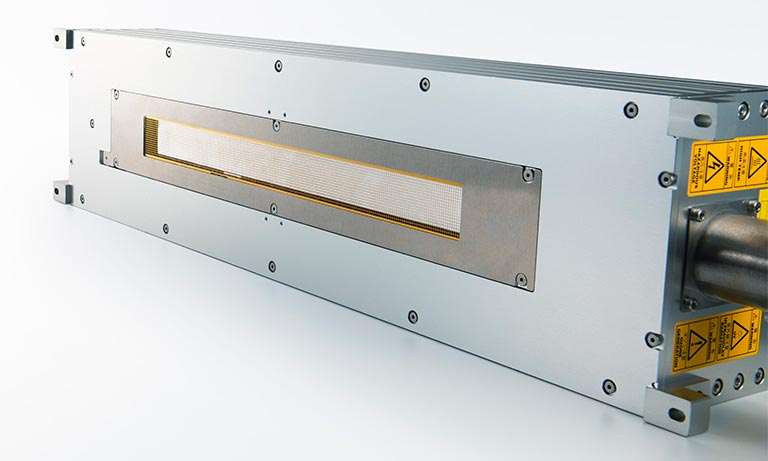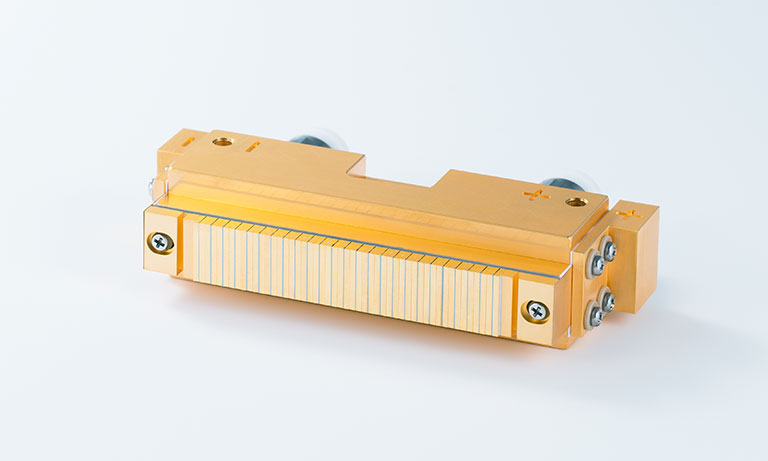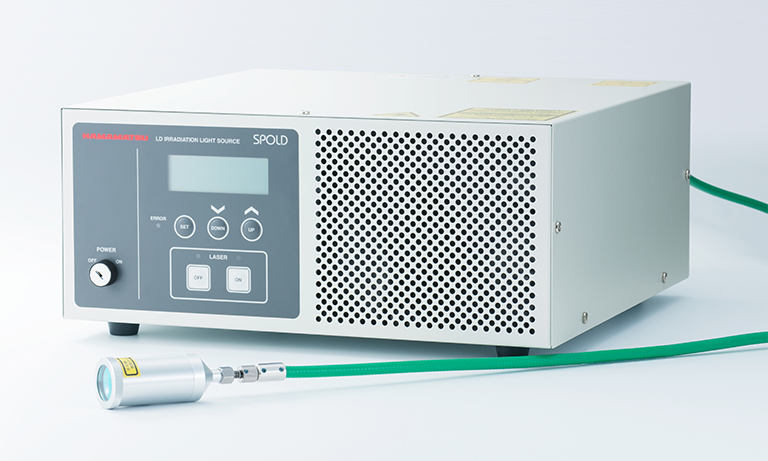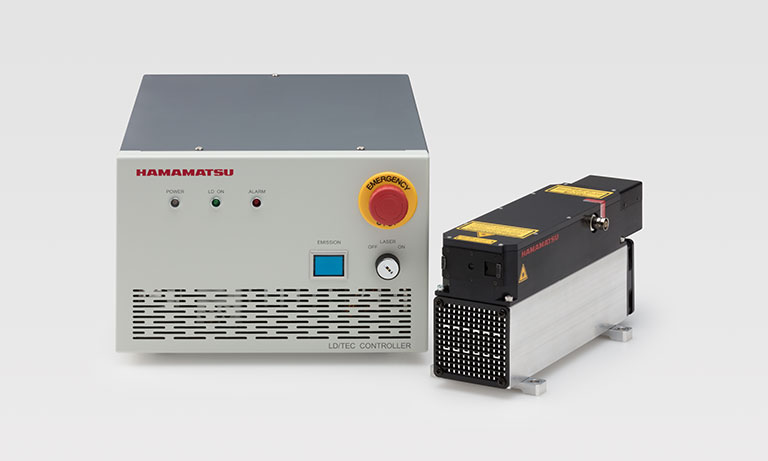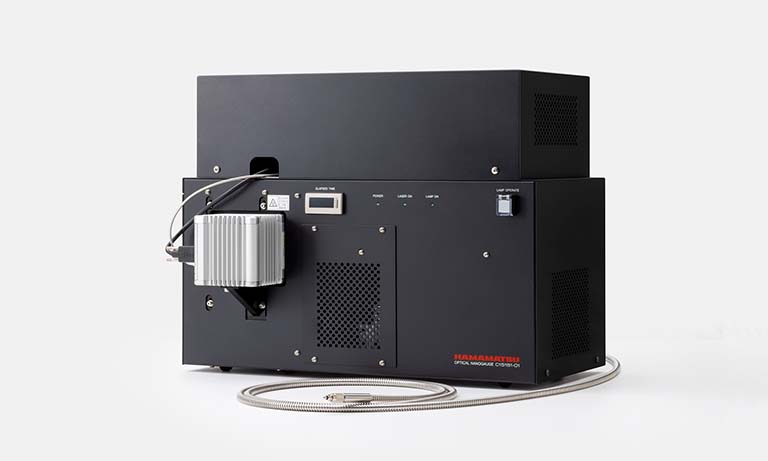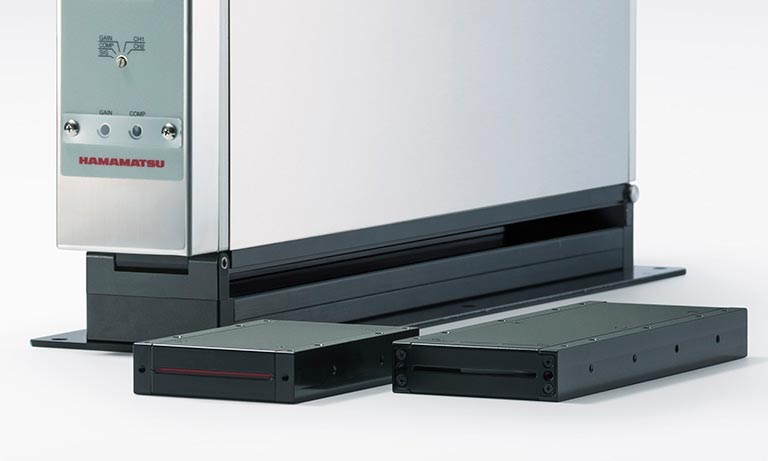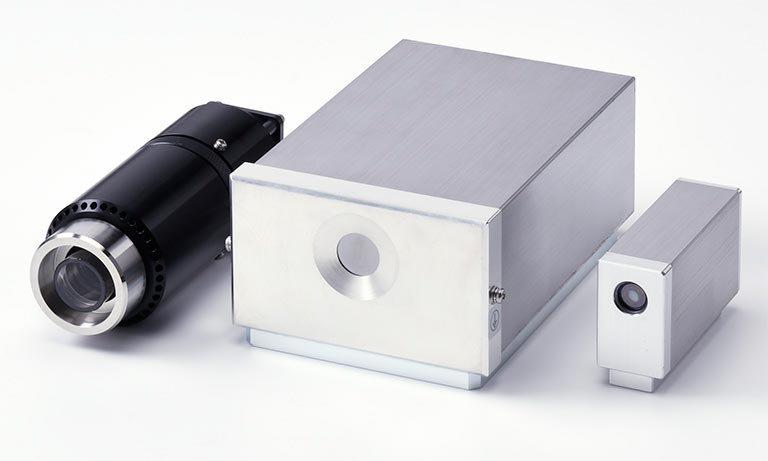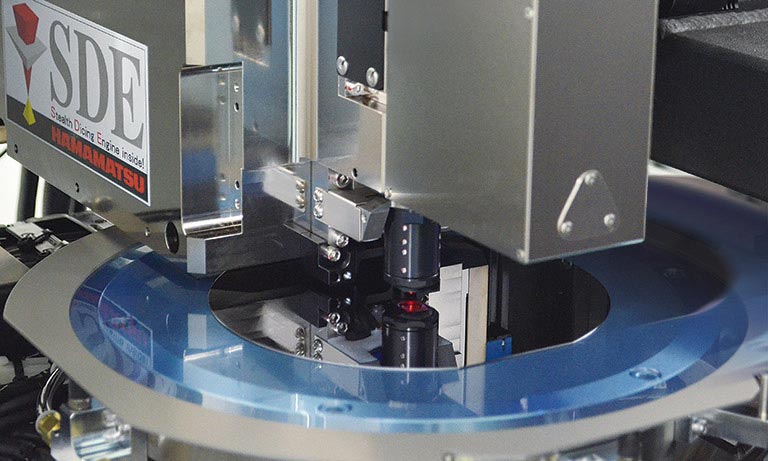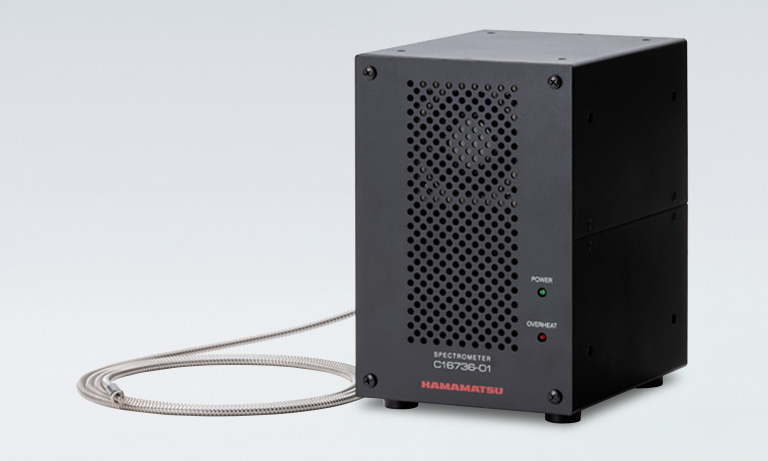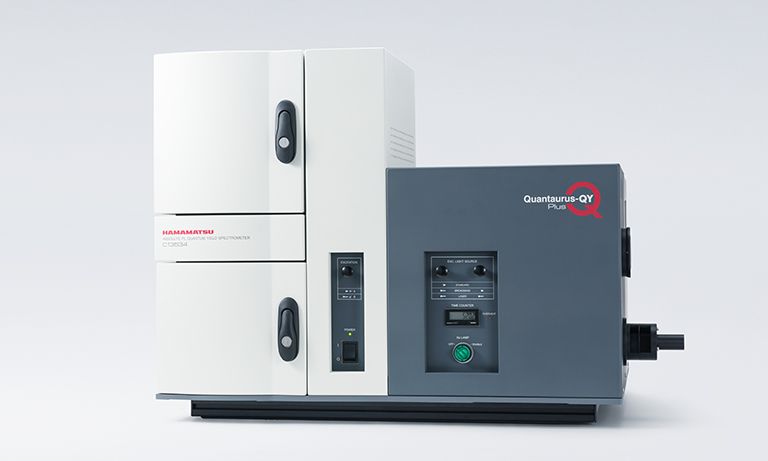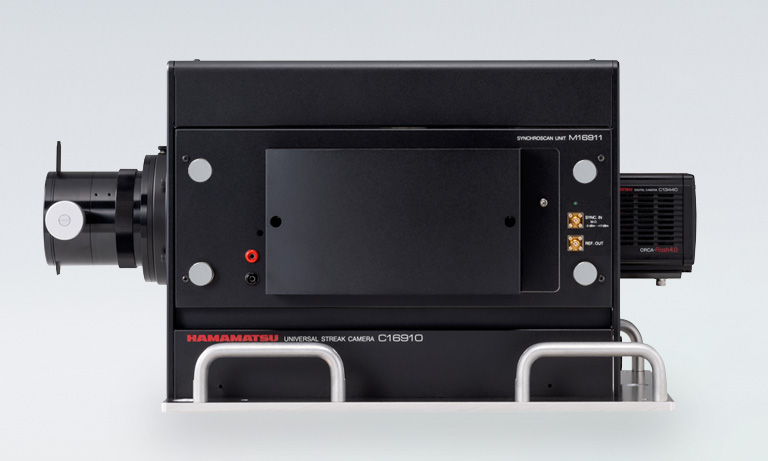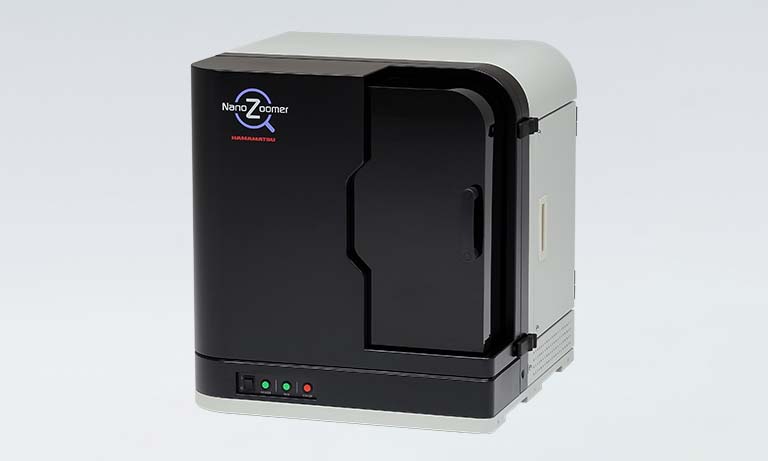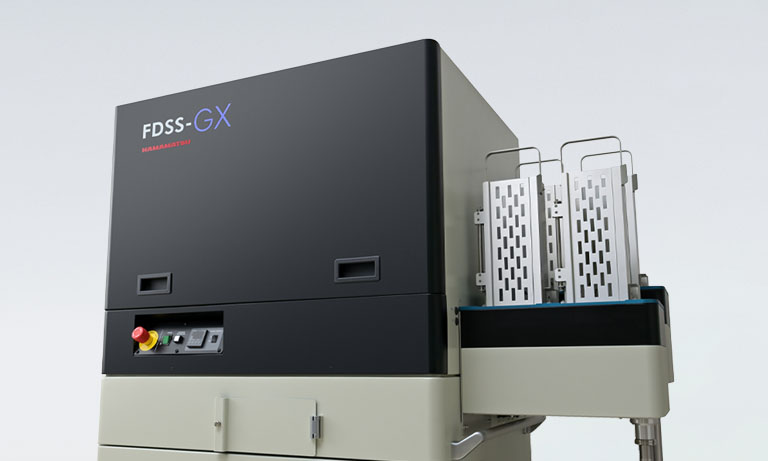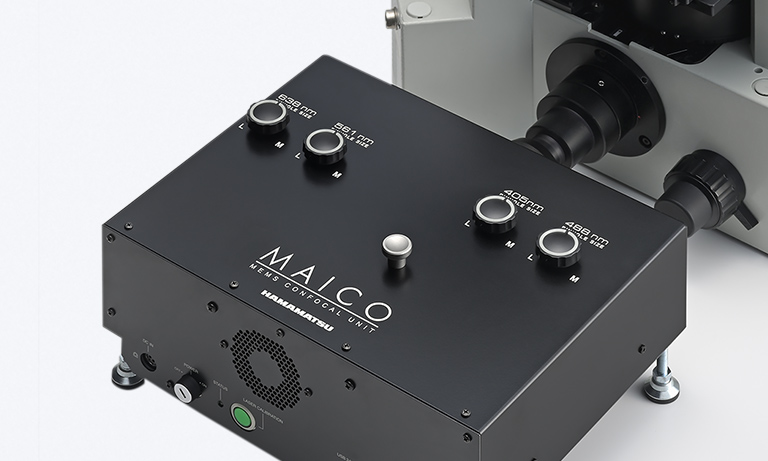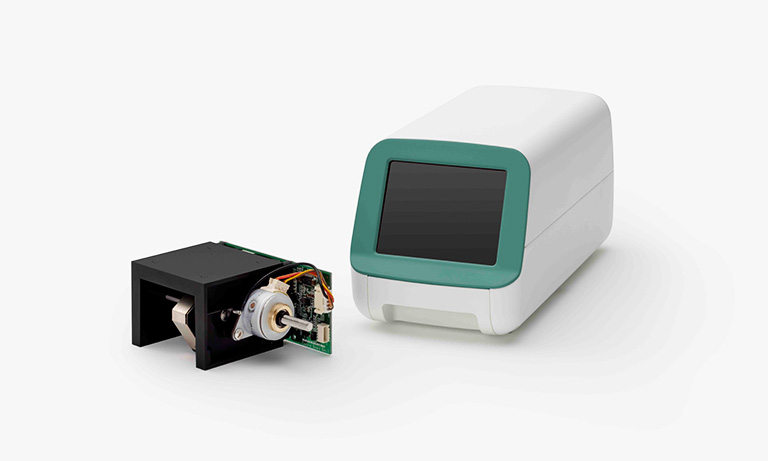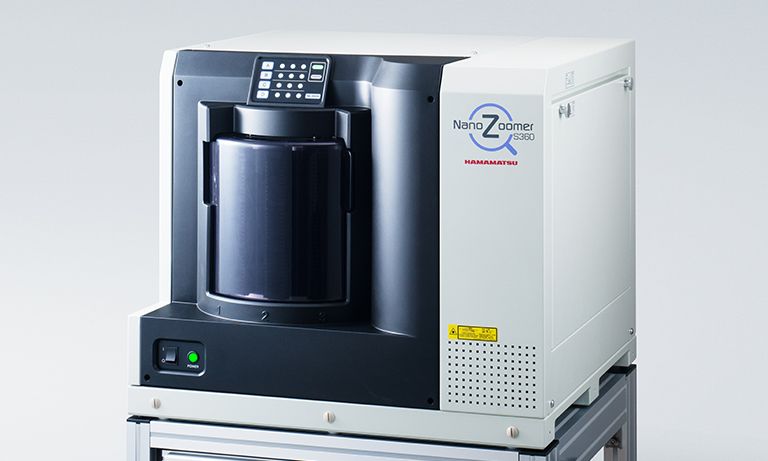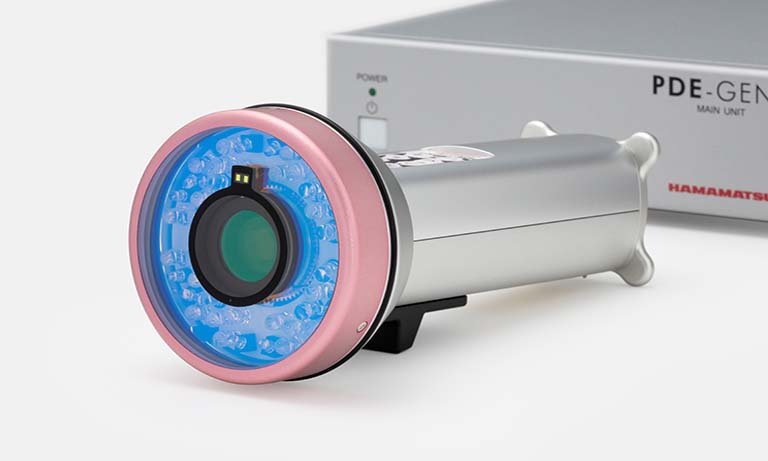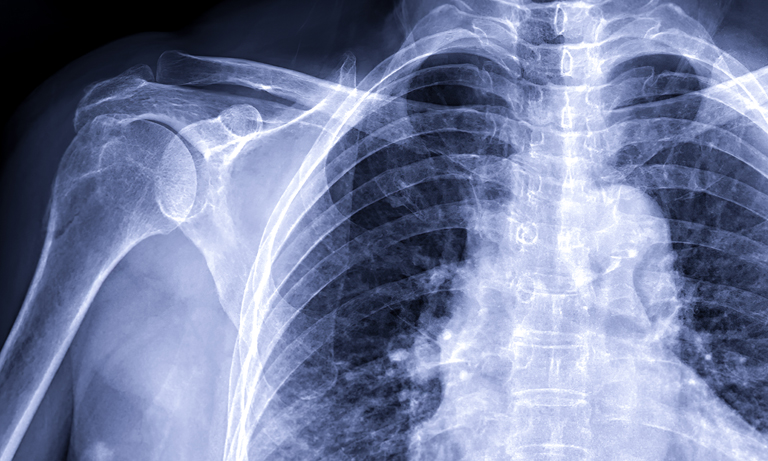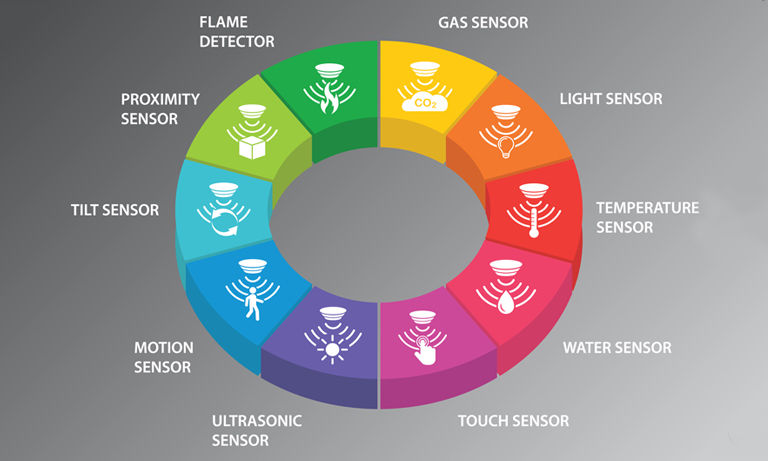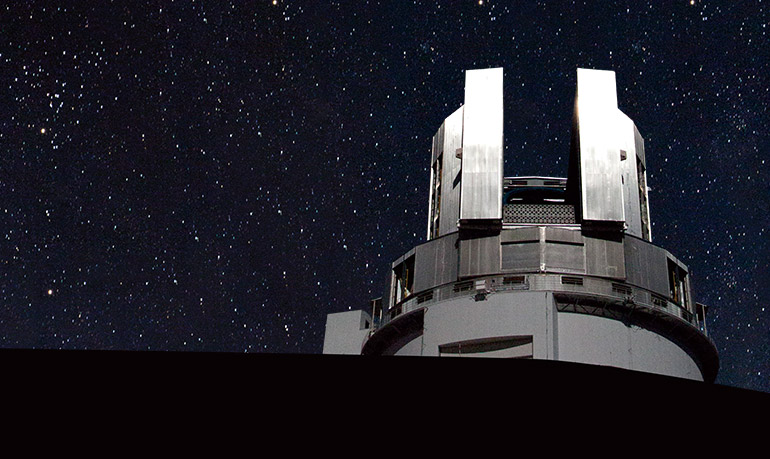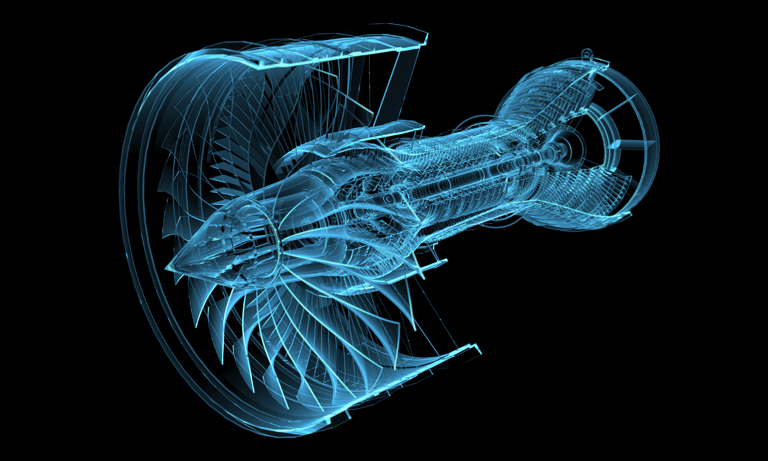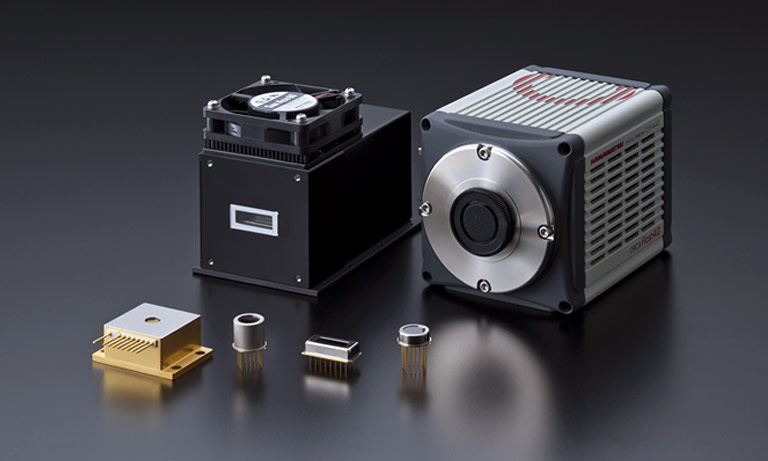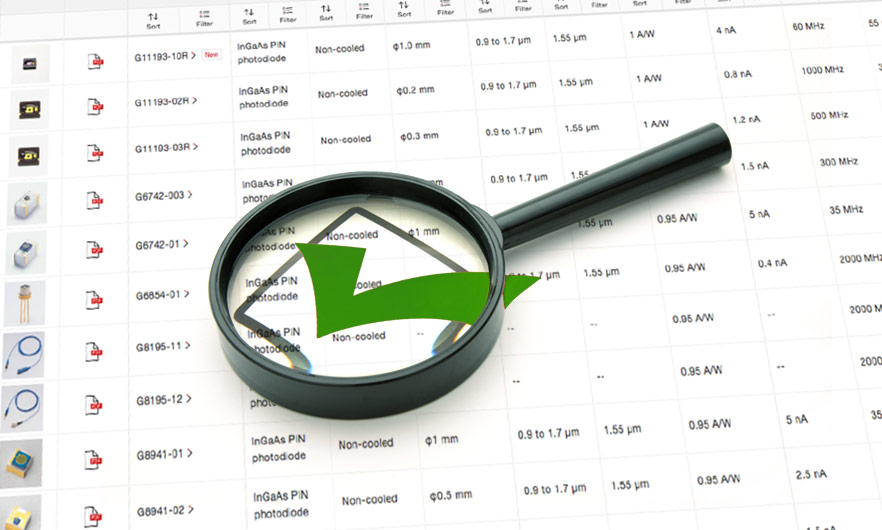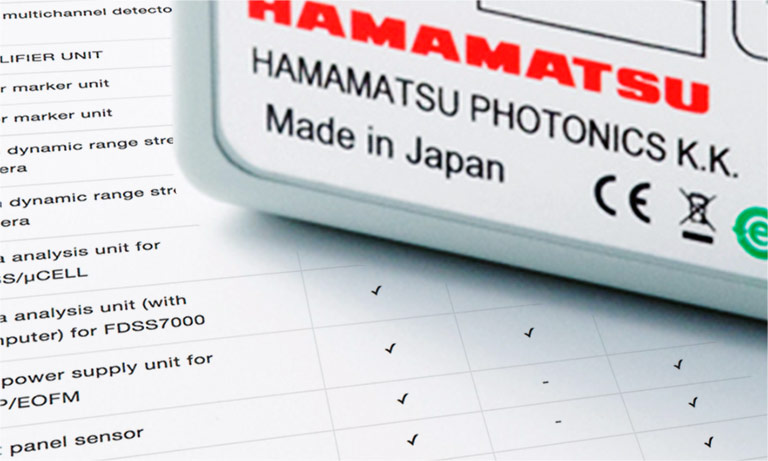United States (EN)
Select your region or country.
S
Scintillation counting
Scintillation counting is one of the most sensitive and effective methods for detecting radiation. It uses a photomultiplier tube coupled to a scintillator that produces light when struck by radiation. In radiation measurements, there are two parameters that should be measured: the energy of individual radiation particles and the amount of radiation. When radiation particles enter the scintillator, they produce visible light in response to each particle. The amount of light is extremely low, but is proportional to the energy of the incident particle. Since individual light flashes are detected by the photomultiplier tube, the output pulses obtained from the photomultiplier tube contain information on both the energy and amount of pulses. By analyzing these output pulses using a multichannel analyzer (MCA) a pulse height distribution (PHD) or energy spectrum is obtained and the amount of incident particles at various energy levels can be measured accurately.
Scintillator
A material that emits light when exposed to radiation such as X-rays. Scintillators are divided into inorganic and organic scintillators. Well-known inorganic scintillators are crystals or powder of CsI (cesium iodide) doped with a small amount of activator such as Tl (thallium) to enhance the emission efficiency. Organic scintillators include naphthalene, anthracene, plastic, liquid scintillator, and lumogen. The lumogen is a material that emits light in response to UV rays, and is therefore sometimes coated on front-illuminated CCDs having no UV sensitivity.
Short circuit current (Isc)
This is the output current that flows in a photodiode when load resistance is zero. This is called “white light sensitivity” to differentiate it from the spectral response, and is measured with light from a standard tungsten lamp at 2856 K distribution temperature (color temperature). Our product catalog lists the short circuit current measured under an illuminance of 100 lx.
Shunt resistance
This is the voltage/current ratio of a photodiode operated in the vicinity of 0 V. In our product catalog, the shunt resistance is specified by the following equation, where the dark current (ID) is a value measured at a reverse voltage of 10 mV. $$ Rsh[ohms]=\frac{0.01 [V]}{ID[A]} $$ Noise generated from the shunt resistance becomes dominant in applications where a reverse voltage is not applied to the photodiode.
Single-mode fiber
An optical fiber designed to transmit light in the single transverse mode (electromagnetic field distribution). Single-mode fibers have low transmission loss and are not affected by modal dispersion, making them suitable for long-distance transmission. However, they require precise core alignment when connecting to a light emitter since their core diameter is small.
Smear
In image sensors, smear is a phenomenon where a signal charge generated by intense input light leaks to the adjacent pixels or CCD transfer region and causes the original signal to become smeared (blurred). In contrast to “blooming” that occurs following saturation, smears occur even before saturation. Smears tend to occur from light at longer wavelengths rather than light at shorter wavelengths.
SOA (semiconductor optical amplifier)
An optical amplifier using a semiconductor. The structure is very similar to a Fabry-Perot laser diode but is designed not to cause reflection at the edge. SOA enables amplification over a wide spectral range and requires fewer components than EDFA, which makes the amplifier device smaller and reduces power consumption.
SONET/SDH
These are international standards for high-speed digital communication methods using optical fibers. SONET (Synchronous Optical Network) is a North American standard specifications established by ANSI (American National Standards Institute) based on technology developed by Bellcore Technologies (now Telcordia Technologies). SDH (Synchronous Digital Hierarchy) is an internationally standardized interface by ITU (International Telecommunication Union) based on SONET. Although differing on some minor points, SONET and SDH can be considered as nearly the same standard and allow interconnections with each other. SONET is well-known in North America, while SDH is mainly used in Europe.
Space charge effect
When light incident on a photosensor is blocked, the carrier distribution in the depletion layer is disturbed. The carriers are then drawn to the electrodes and generate an electric field in the depletion layer in the direction opposite to the applied bias voltage. This phenomenon is referred to as the space charge effect and might degrade the response characteristics (fall time) when the incident light level is high.
Spatial resolution
The ability of an image sensor to faithfully capture the details of an object. MTF (modulation transfer function) is usually used to evaluate the resolution of an image sensor. When an object with a sine-wave brightness distribution is imaged, the MTF indicates how the sine-wave brightness contrast varies with the spatial frequency. The spatial frequency is the number of times that a sine wave is repeated per unit length. Since the active area of a CCD consists of discrete pixels, CCDs have a limiting resolution determined by the Nyquist limit based on the discrete sampling theorem. For example, when a black-and-white pattern is viewed with a CCD, the difference between the black and white signal levels decreases as the pattern becomes finer, and finally reaches a point at which the pattern can no longer be resolved. The ideal MTF is expressed as follows: sinc* {(π x f ) / (2 x fn)} (f: spatial frequency, fn: spatial Nyquist frequency). However, because of the difficulty in creating an optical sine wave, a rectangular-wave response test chart is generally used instead. In this case, the spatial frequency response is called the CTF (contrast transfer function).
* sinc: Fourier transform of an ideal rectangular function
Spectral distribution
The wavelength range of energy emitted by a lamp. The wavelength range varies according to the input energy, gas pressure, type of lamp (continuous vs. flash mode) and transmittance on the window material.
Spectral half-width
Full width at half of the output maximum of the emission spectrum, expressed in wavelength (nm).
Spectral response
The photocurrent produced by a given level of incident light varies with the wavelength. This relation between the photoelectric sensitivity and wavelength is referred to as the spectral response characteristic and is expressed in terms of photosensitivity or quantum efficiency versus wavelength.
Stealth DicingTM process
Stealth DicingTM process is a new dicing method developed by HAMAMATSU. It uses a laser beam to form a modification layer inside a wafer and cut the wafer into chips with high quality. Since light that transmits into the material is used, no thermal damage occurs on the wafer surface. Stealth DicingTM process does not produce any cutting loss, so the chip yield per wafer can be increased to the maximum. There is absolutely no contamination such as from flying debris which is unavoidable in conventional dicing techniques, and Stealth DicingTM process is a completely dry process because no cleaning water is required.
Synchrotron radiation
Intense light that is generated when electrons or positrons are accelerated up to near the speed of light and bent in magnetic fields. Synchrotron radiation covers a broad spectral range from infrared light through X-rays. This light is more than a hundred-million times brighter than light emitted from ordinary X-ray generators. Synchrotron radiation applications are being studied for a wider range of fields including medicine, physics, and chemistry.
- Confirmation
-
It looks like you're in the . If this is not your location, please select the correct region or country below.
You're headed to Hamamatsu Photonics website for US (English). If you want to view an other country's site, the optimized information will be provided by selecting options below.
In order to use this website comfortably, we use cookies. For cookie details please see our cookie policy.
- Cookie Policy
-
This website or its third-party tools use cookies, which are necessary to its functioning and required to achieve the purposes illustrated in this cookie policy. By closing the cookie warning banner, scrolling the page, clicking a link or continuing to browse otherwise, you agree to the use of cookies.
Hamamatsu uses cookies in order to enhance your experience on our website and ensure that our website functions.
You can visit this page at any time to learn more about cookies, get the most up to date information on how we use cookies and manage your cookie settings. We will not use cookies for any purpose other than the ones stated, but please note that we reserve the right to update our cookies.
1. What are cookies?
For modern websites to work according to visitor’s expectations, they need to collect certain basic information about visitors. To do this, a site will create small text files which are placed on visitor’s devices (computer or mobile) - these files are known as cookies when you access a website. Cookies are used in order to make websites function and work efficiently. Cookies are uniquely assigned to each visitor and can only be read by a web server in the domain that issued the cookie to the visitor. Cookies cannot be used to run programs or deliver viruses to a visitor’s device.
Cookies do various jobs which make the visitor’s experience of the internet much smoother and more interactive. For instance, cookies are used to remember the visitor’s preferences on sites they visit often, to remember language preference and to help navigate between pages more efficiently. Much, though not all, of the data collected is anonymous, though some of it is designed to detect browsing patterns and approximate geographical location to improve the visitor experience.
Certain type of cookies may require the data subject’s consent before storing them on the computer.
2. What are the different types of cookies?
This website uses two types of cookies:
- First party cookies. For our website, the first party cookies are controlled and maintained by Hamamatsu. No other parties have access to these cookies.
- Third party cookies. These cookies are implemented by organizations outside Hamamatsu. We do not have access to the data in these cookies, but we use these cookies to improve the overall website experience.
3. How do we use cookies?
This website uses cookies for following purposes:
- Certain cookies are necessary for our website to function. These are strictly necessary cookies and are required to enable website access, support navigation or provide relevant content. These cookies direct you to the correct region or country, and support security and ecommerce. Strictly necessary cookies also enforce your privacy preferences. Without these strictly necessary cookies, much of our website will not function.
- Analytics cookies are used to track website usage. This data enables us to improve our website usability, performance and website administration. In our analytics cookies, we do not store any personal identifying information.
- Functionality cookies. These are used to recognize you when you return to our website. This enables us to personalize our content for you, greet you by name and remember your preferences (for example, your choice of language or region).
- These cookies record your visit to our website, the pages you have visited and the links you have followed. We will use this information to make our website and the advertising displayed on it more relevant to your interests. We may also share this information with third parties for this purpose.
Cookies help us help you. Through the use of cookies, we learn what is important to our visitors and we develop and enhance website content and functionality to support your experience. Much of our website can be accessed if cookies are disabled, however certain website functions may not work. And, we believe your current and future visits will be enhanced if cookies are enabled.
4. Which cookies do we use?
There are two ways to manage cookie preferences.
- You can set your cookie preferences on your device or in your browser.
- You can set your cookie preferences at the website level.
If you don’t want to receive cookies, you can modify your browser so that it notifies you when cookies are sent to it or you can refuse cookies altogether. You can also delete cookies that have already been set.
If you wish to restrict or block web browser cookies which are set on your device then you can do this through your browser settings; the Help function within your browser should tell you how. Alternatively, you may wish to visit www.aboutcookies.org, which contains comprehensive information on how to do this on a wide variety of desktop browsers.
5. What are Internet tags and how do we use them with cookies?
Occasionally, we may use internet tags (also known as action tags, single-pixel GIFs, clear GIFs, invisible GIFs and 1-by-1 GIFs) at this site and may deploy these tags/cookies through a third-party advertising partner or a web analytical service partner which may be located and store the respective information (including your IP-address) in a foreign country. These tags/cookies are placed on both online advertisements that bring users to this site and on different pages of this site. We use this technology to measure the visitors' responses to our sites and the effectiveness of our advertising campaigns (including how many times a page is opened and which information is consulted) as well as to evaluate your use of this website. The third-party partner or the web analytical service partner may be able to collect data about visitors to our and other sites because of these internet tags/cookies, may compose reports regarding the website’s activity for us and may provide further services which are related to the use of the website and the internet. They may provide such information to other parties if there is a legal requirement that they do so, or if they hire the other parties to process information on their behalf.
If you would like more information about web tags and cookies associated with on-line advertising or to opt-out of third-party collection of this information, please visit the Network Advertising Initiative website http://www.networkadvertising.org.
6. Analytics and Advertisement Cookies
We use third-party cookies (such as Google Analytics) to track visitors on our website, to get reports about how visitors use the website and to inform, optimize and serve ads based on someone's past visits to our website.
You may opt-out of Google Analytics cookies by the websites provided by Google:
https://tools.google.com/dlpage/gaoptout?hl=en
As provided in this Privacy Policy (Article 5), you can learn more about opt-out cookies by the website provided by Network Advertising Initiative:
http://www.networkadvertising.org
We inform you that in such case you will not be able to wholly use all functions of our website.
Close
